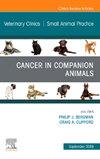Aminoaciduric Canine Hypoaminoacidemic Hepatopathy Syndrome
IF 2
3区 农林科学
Q2 VETERINARY SCIENCES
Veterinary Clinics of North America-Small Animal Practice
Pub Date : 2025-05-12
DOI:10.1016/j.cvsm.2025.03.009
引用次数: 0
犬低胺酸血症性肝病综合征。
氨基酸尿酸犬低胺酸性肝病综合征是一种多方面的临床疾病,其病理生理学尚未完全描述。目前的证据表明,低胺酸血症与浅表性坏死性皮炎和肝皮病变(低胺酸血症/肝皮相关犬肝病)的发展之间存在联系,尽管驱动这些关联的潜在机制尚未明确定义。氨基酸尿的存在,以及在皮肤、肝脏和肠道等关键器官中氨基酸转运功能受损,可能在该综合征的进展中起重要作用。此外,胰高血糖素水平升高可能进一步加剧低胺酸血症,使临床症状恶化。
本文章由计算机程序翻译,如有差异,请以英文原文为准。
求助全文
约1分钟内获得全文
求助全文
来源期刊
CiteScore
3.80
自引率
0.00%
发文量
123
审稿时长
18-36 weeks
期刊介绍:
Veterinary Clinics of North America: Small Animal Practice offers you the most current information on the treatment of small animals such as cats and dogs, updates you on the latest advances, and provides a sound basis for choosing treatment options. Published bi-monthly—in January, March, May, July, September, November—each issue focuses on a single topic in small animal practice, including endocrinology, fluids and electrolytes, gastroenterology, infectious diseases, neurology, oncology, urology, respiratory issues , surgical information, small animal behavior, laboratory medicine, imaging methods, and nutrition.

 求助内容:
求助内容: 应助结果提醒方式:
应助结果提醒方式:


